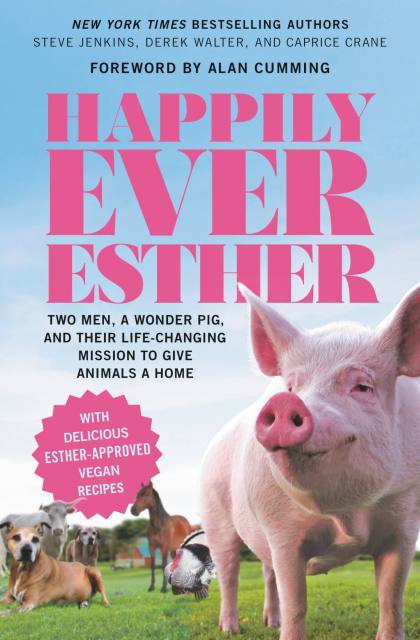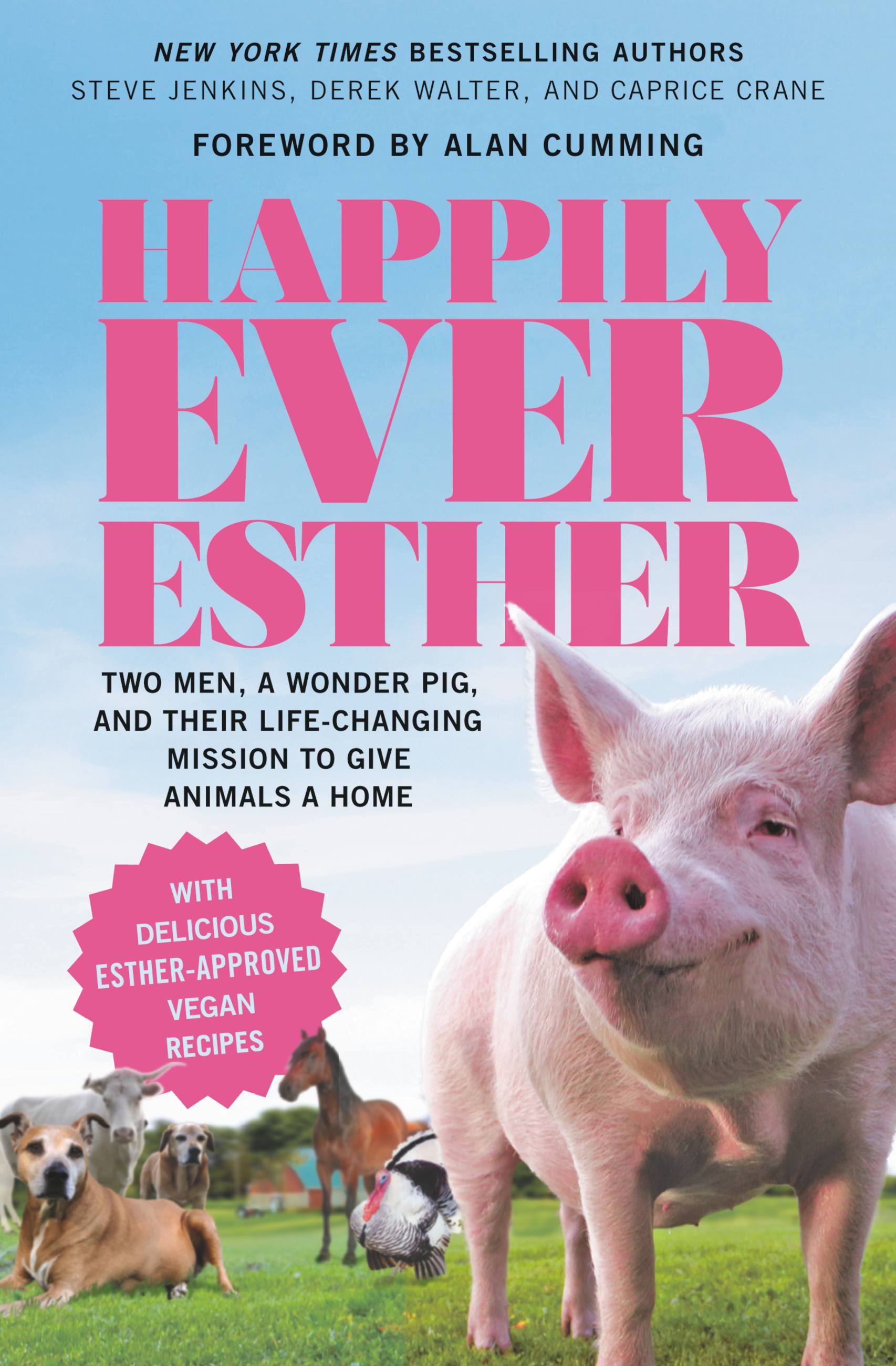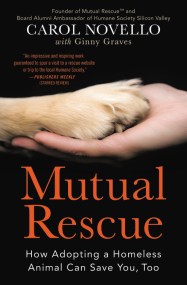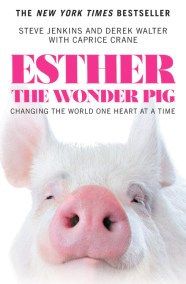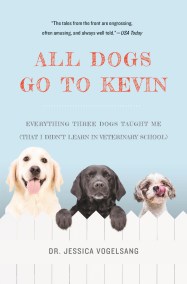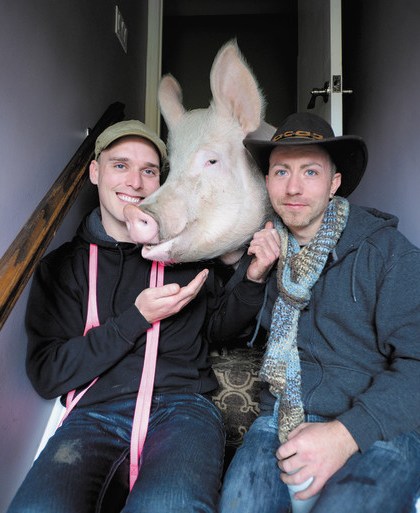Promotion
Use code MOM24 for 20% off site wide + free shipping over $45
Happily Ever Esther
Two Men, a Wonder Pig, and Their Life-Changing Mission to Give Animals a Home
Contributors
By Steve Jenkins and Derek Walter
By Derek Walter
Formats and Prices
Price
$9.99Price
$11.99 CADFormat
Format:
- ebook $9.99 $11.99 CAD
- Hardcover $27.00 $35.00 CAD
- Audiobook Download (Unabridged)
- Trade Paperback $16.99 $22.49 CAD
This item is a preorder. Your payment method will be charged immediately, and the product is expected to ship on or around July 10, 2018. This date is subject to change due to shipping delays beyond our control.
Also available from:
From the New York Times bestselling authors and loving owners of Esther the Wonder Pig, comes a memoir about their new life on the Happily Ever Esther Farm Sanctuary, which is anything but boring.
Steve Jenkins and Derek Walter, had their lives turned upside down when they adopted their pig-daughter Esther–the so-called micro pig who turned out to be a full-sized commercial pig growing to a whopping 600 pounds–as they describe in their bestselling memoir Esther the Wonder Pig. The book ends with them moving to a new farm, and starting a new wonderful life where they will live on the Happily Ever Esther Farm Sanctuary to care for other animals and just live happily ever after…
Or so they thought. People often think about giving it all up and just moving to a farm. In theory it sure does sound great. But as Derek and Steve quickly realized, the realities of being a farmer–especially when you have never lived on a farm let alone outside of the city–can be frantic, crazy, and even insane. Not only are they adjusting to farm life and dutifully taking care of their pig-daughter Esther (who by the way lives in the master bedroom of their house), but before they knew it their sanctuary grew to as many as 42 animals, including: pigs, sheep, goats, rabbits, chickens, cows, roosters, a peacock, a duck, a horse, a donkey, and a barn cat named Willma Ferrell.
Written with joy and humor, and filled with delicious Esther-approved recipes dispersed throughout the book, this charming memoir captures an emotional journey of one little family advocating for animals everywhere.
Steve Jenkins and Derek Walter, had their lives turned upside down when they adopted their pig-daughter Esther–the so-called micro pig who turned out to be a full-sized commercial pig growing to a whopping 600 pounds–as they describe in their bestselling memoir Esther the Wonder Pig. The book ends with them moving to a new farm, and starting a new wonderful life where they will live on the Happily Ever Esther Farm Sanctuary to care for other animals and just live happily ever after…
Or so they thought. People often think about giving it all up and just moving to a farm. In theory it sure does sound great. But as Derek and Steve quickly realized, the realities of being a farmer–especially when you have never lived on a farm let alone outside of the city–can be frantic, crazy, and even insane. Not only are they adjusting to farm life and dutifully taking care of their pig-daughter Esther (who by the way lives in the master bedroom of their house), but before they knew it their sanctuary grew to as many as 42 animals, including: pigs, sheep, goats, rabbits, chickens, cows, roosters, a peacock, a duck, a horse, a donkey, and a barn cat named Willma Ferrell.
Written with joy and humor, and filled with delicious Esther-approved recipes dispersed throughout the book, this charming memoir captures an emotional journey of one little family advocating for animals everywhere.
Genre:
-
"Alternately heartwarming and hilarious, earnest and absurd...a testament to how the idealism, perseverance and activism of ordinary people can actually change people's minds and change the world for the better."Winnipeg Free Press
-
"Using his trademark self-deprecating humor, Jenkins...chronicles the zany misadventures...Jenkins is refreshingly candid...this is essential reading for [Esther's] many fans."Library Journal
- On Sale
- Jul 10, 2018
- Page Count
- 224 pages
- Publisher
- Grand Central Publishing
- ISBN-13
- 9781538728123
Newsletter Signup
By clicking ‘Sign Up,’ I acknowledge that I have read and agree to Hachette Book Group’s Privacy Policy and Terms of Use
